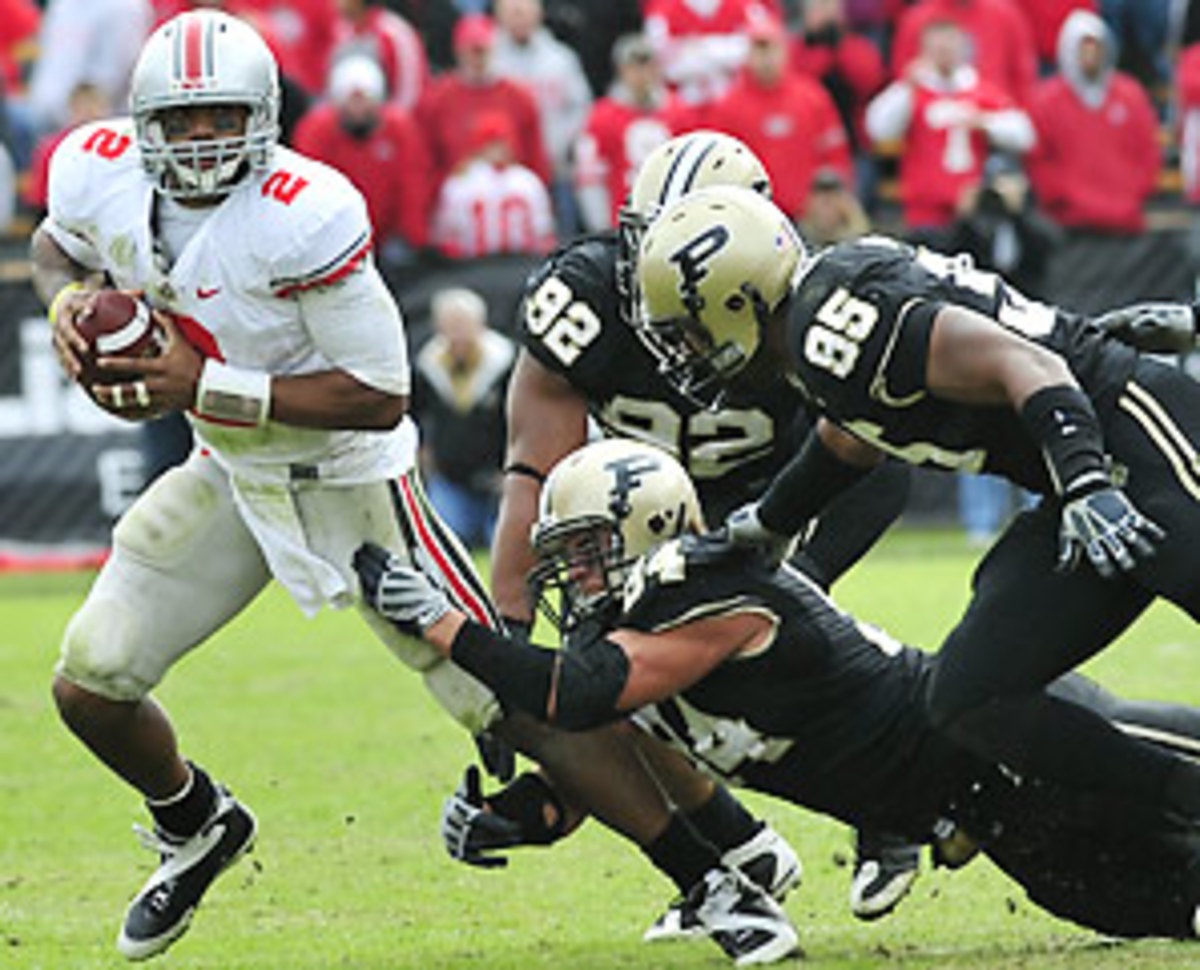Parity, not weakness, at work in much maligned Big Ten
The Big 12 North has turned into a crapshoot. The ACC Coastal Division could potentially wind up in such a tangled state that a blind draw tiebreaker could determine the winner. Seriously. But nowhere has parity taken hold quite like in the Big Ten.
Just take a look at Michigan State and Purdue.
Three weeks ago, the Spartans looked dead in the water. They followed up an embarrassing home loss to in-state little brother Central Michigan by losing at Notre Dame and Wisconsin. But after three straight conference wins, they host No. 6 Iowa on Saturday with a share of the Big Ten lead on the line.
Last weekend, Purdue's upset over then No. 7 Ohio State left every sports editor cramming the word "stun" into his or her headlines. Despite entering the game with just one win to their credit, the Boilermakers all-but ended the Buckeyes' national title hopes.
On the surface, the fact that a previously 1-3 team could sit atop the standings and that a one-win squad could topple a top 10 team might seem like the latest doomsday scenario for the Big Ten. But the conference's elder statesman, for one, thinks it reflects balance more than weakness.
"I think there is a little bit more balance in the league," Joe Paterno said last week. "I think it's tougher. I think it's tougher than it was."
He's clearly on to something. Through the first 19 Big Ten games this season, the average margin of victory has been 11.6 points, fewer than in the ACC, Big East, Big 12, Pac-10 or SEC. The Big Ten also leads the BCS conferences with 10 games decided by 10 points or less. And seven weeks in, the conference boasts a nation's best nine teams at or within two wins of bowl eligibility.
Entering the season, most believed the conference would be a two-horse race between Ohio State and Penn State. But all of a sudden, the conference boasts serious depth. Iowa's undefeated and ranked seventh nationally. Michigan appears revived. Wisconsin began the season 5-0. Even Indiana, which has already eclipsed its 2008 wins total, has been competitive.
Granted, Illinois, a preseason darkhorse contender, has been a complete train wreck. The 1-5 Illini last beat a BCS conference team on Nov. 1 2008, have allowed 30.6 points per game against FBS teams and rank 112th nationally in scoring offense (12.6 per game). But fellow cellar-dweller Purdue has played much better than its 2-5 record indicates. Aside from a 15-point loss to Minnesota, Danny Hope's crew has lost four games by seven points or less, including 38-36 at 12th-ranked Oregon and 24-21 vs. Notre Dame.
Of course, perception is in the eye of the beholder, and as far as the rest of the nation is concerned the Big Ten hasn't been much to look at lately. The conference, to its detriment, has done little to boost its reputation.
Big Ten teams have gone 5-8 against BCS conference teams and Notre Dame this season. Outside of the Wolverines' win over the Irish, they've lost their other two games against ranked opponents (the Buckeyes fell to USC and Cal beat Minnesota). Penn State, the one Big Ten team ranked in the top 30 in total offense, has failed to impress, beating just two teams with winning records and losing its only big game so far against Iowa. The Hawkeyes, for their part, haven't won any style points, and despite their 7-0 record and No. 7 ranking are a complete afterthought in the BCS title race.
While the ACC and Big East take their share of punches, the Big Ten has played the part of Glass Joe lately, with its 6-14 record in the past three postseasons (and ugly 0-6 mark in BCS bowls) begging detractors to take a shot at its chin.
That public skepticism has spawned a double standard. If Purdue beats Ohio State, it's laughable. If, however, one-loss LSU fell to 2-5 Vanderbilt, it's reasonable to assume most would chalk it up to SEC depth.
With its marquee nonconference games in the books, the Big Ten will have to wait to prove its merit in the bowls. It'll have to rebuild its reputation in painstakingly slow fashion, win by win and small battle by small battle.
If recent years serve as any indication, the Big Ten is evolving, at least from a balance standpoint. Michigan and Ohio State won or earned a share of the conference title 26 times from 1968-98, but in the last decade, eight different teams have earned all or part of the title. Two years ago, the league produced a record 10 bowl eligible teams, and this season it could wind up with at least nine teams above .500 for just the sixth time since 1904.
But that evolution has occurred amid the conference's national struggles. For that reason, many have perceived parity as weakness.
That parity has hit Jim Tressel's squad directly, but even he believes it's a good thing. "I'd like to think that, at the end of the year, we'll be able to look back and say the Big Ten was as strong as it's been in some time," he said.
That may be so, but until the bowl's hit, the verdict's still out.






